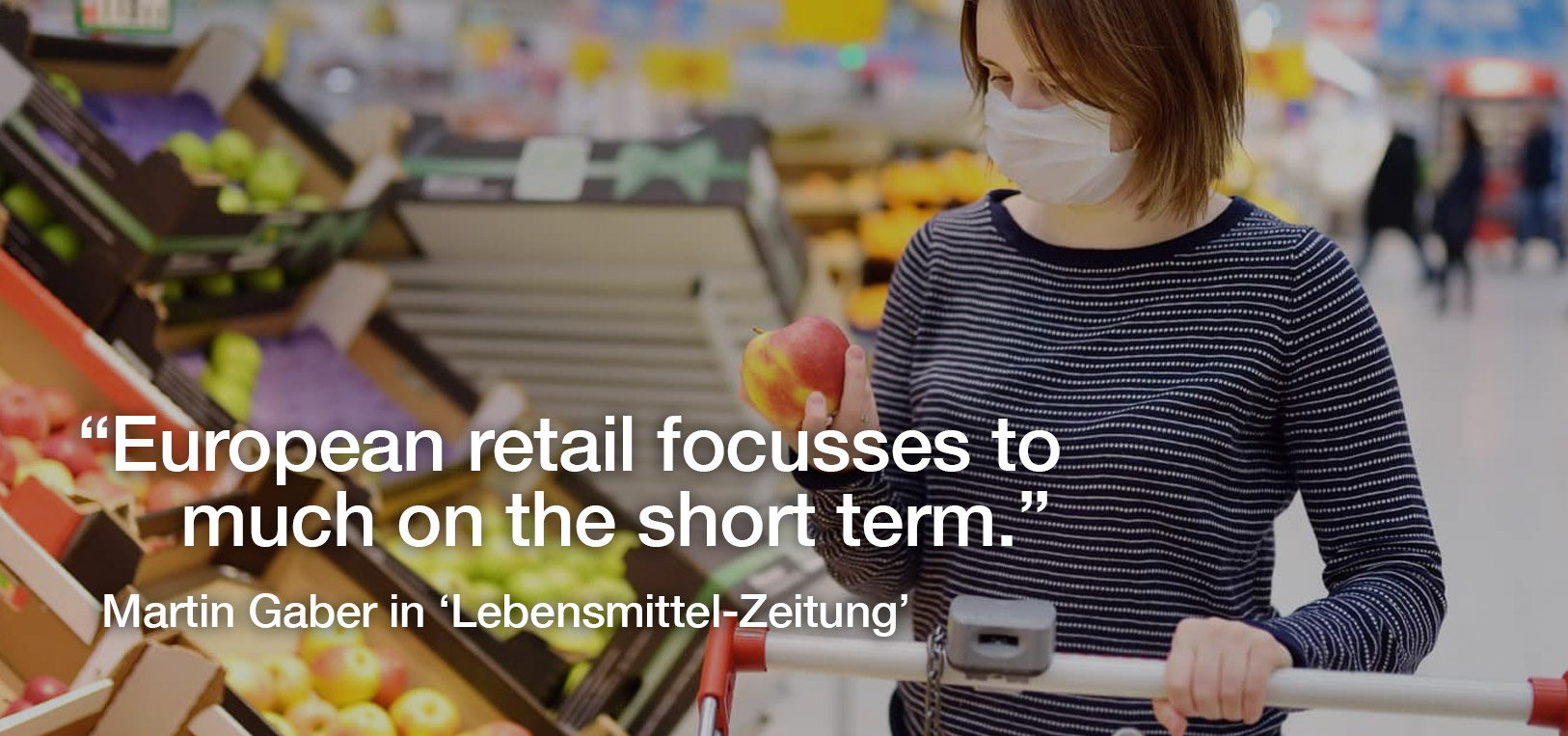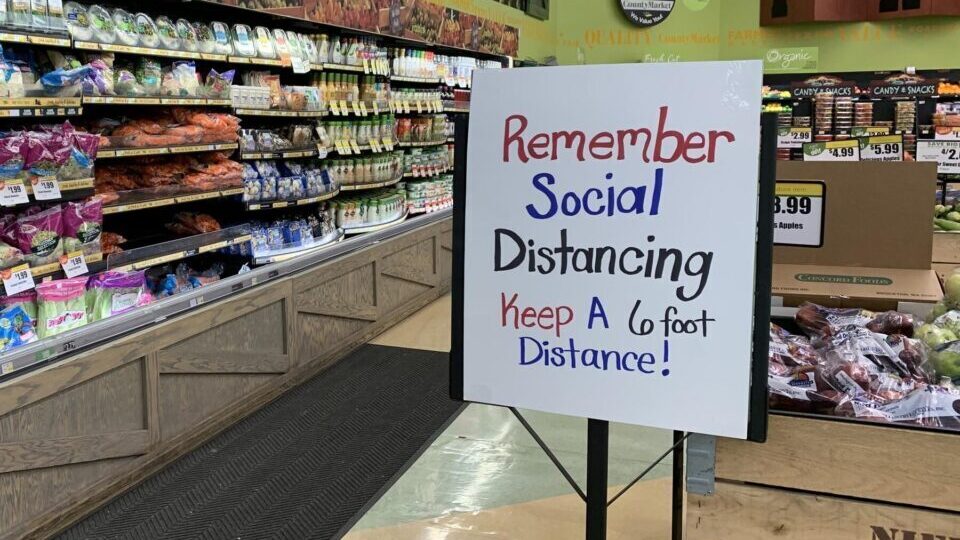
The food retailer has been classified as crucial for society and stayed open during the Corona crisis and lockdown. Therefor food retailers have to protect themselves against the potential future waves of infections, according to Martin Gaber of the Dutch retail design company JDV. In addition to short-term measures such as social distancing and the obligation to wear a facemask, the store designers of JDV offer the industry various ideas and concepts for a virus-proof store. The spectrum ranges from inexpensive measures such as the use of shopping carts to fixed routing and newly organized service counters to the installation of self-scanning checkouts including only cashless payment.
Mr. Gaber, JDV develops concepts for a 'virus-protected store' for retailers. Are spacing requirements and mask requirements not enough?
Basically, a mask requirement and social distancing are important. Additional measures are intended to make things easier for shoppers and retailers in the long term. It has been shown in Switzerland and Austria that customers quickly become less attentive after time. The measures we propose could keep awareness stable over a longer period of time.
Which measures against infection risks when shopping can be implemented with relatively little investment - especially in food retailing?
Classic hygiene measures certainly require the least effort. The necessary distance between customers can be achieved, for example, by using a shopping trolley - provided that customers also accept this.

JDV also suggests time slots for retailers to control customer frequency. Do you already have practical experience with it?
Ikea tried it out in April after the Taipa / Macau store opened. This resulted in waiting times of up to two weeks. For European retailers, this is of course not an option given the current pandemic. However, it is possible, for example, to display peak times online using Google Maps. This could be used to control customer frequency in individual markets more effectively.
If, another crisis situation arises - such as when a second wave of infection - and retail is facing strict restrictions again, waiting areas would have to be set up. This requires appropriate areas on which the distance requirement apply. Waiting zones are by no means optimal, as the customer would then be held up twice - before entering the sales area and also at the checkout. There is a lot of work down to develop the checkout area as a 'relax zone'. If necessary, retailers would also have to make the entrance areas as attractive and interesting. There is also potential here to entertain shoppers and tell your brand story.
Another of your concepts against infection risks are fixed routing when shopping. Is this acceptable for shoppers who take it for granted to move freely around the store?
One can design such one-way routes in such a way that customers do not feel like they are being stirred to much. We have already developed practical solutions to make this work.
How can you keep service personal safe, for example at as service counters, in the case of a second Corona wave?
You can imagine it a situation similar to Starbucks: employees take orders on one side of the counter, where the orders then are prepared. Meanwhile, customers don't have to wait. You can continue shopping in the market and pick up your order later at your side of the counter.
Wouldn't it be necessary to install new, significantly more spacious counters?
No, not at all - you can do this with existing furniture. What needs to be adjusted is the process flow, not the shop furnishings.
How can retailers - apart from plexiglass frames - optimize their checkout zones in the event of a second wave?
The frame solutions are functional, they may need a few technical improvements. Basically, Covid-19 will accelerate the advance of self-scanning and Scan & Go. Because shoppers are increasingly switching to electronic payment and avoiding personal contacts at the checkout. We expect that the cashless payments will occur at least seven out of ten cases in the near future.
How can retailers further decrease infection risks?
We think retailers should think in scenarios here. You always have to be ready and prepare for different scenario's. In Germany, after the peak of the first wave of infections the restrictions were softened, but then Gütersloh and Warendorf suddenly had to be closed again. JDV is developing different solutions for different scenario's.
Are you currently in talks with well-known retailers?
We have various experiences from different regions. In Asia, for example, the industry is very sensitive, since there is already a second wave there. So the issue is taken very seriously and the long-term challenge is a fact. In Europe, retailers reacted quickly and found short-term solutions. However, it might be speculated that long-term solutions will not be necessary. Of course we would all like that, but one should think of alternative scenarios. We have developed our own programs to consider and evaluate such scenarios together with retailers.
Source: LebensmittelZeitung

